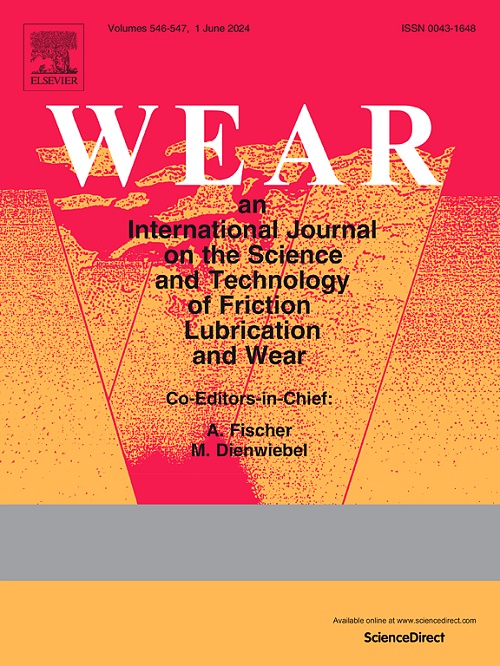Insight into the self-lubricated performance of Lignum vitae-inspired composites manufactured by filament-winding against the brass ball
IF 5.3
1区 工程技术
Q1 ENGINEERING, MECHANICAL
引用次数: 0
Abstract
The self-lubricated performance of Lignum vitae makes it suitable for the construction of water-lubricated bearings, its performance lies in the internal vessel and oil content. Therefore, Lignum vitae's self-lubricated mechanism always inspired the design of novel materials to improve the lubrication capacity under harsh conditions such as heavy load or low speed. In this study, a Lignum vitae-inspired composite was fabricated by filament-winding with different winding angles. The parameters of the composite's internal fiber and lubricant were based on Lignum vitae's vessel characterization. The tribological tests were conducted between the composites and brass, which is the common building material of the propeller shaft of the ship to simulate the friction contact of water-lubricated bearing. After a series of reciprocating-sliding point-contact wear tests under un/water-lubricated conditions, the results showed the filament-winding angle has a significant effect on the tribological performance of the composite. Among these, the winding angle of 55° shows the best capacity of load distribution and advantages in lubrication secretion, resulting in excellent mechanical properties and self-lubricated performance in both lubrication conditions. This study combines the bionic and filament-winding manufacture to reproduce Lignum vitae's self-lubricated performance on the polymer composite, which provides a new reference for water-lubricated bearing material design.
求助全文
约1分钟内获得全文
求助全文
来源期刊

Wear
工程技术-材料科学:综合
CiteScore
8.80
自引率
8.00%
发文量
280
审稿时长
47 days
期刊介绍:
Wear journal is dedicated to the advancement of basic and applied knowledge concerning the nature of wear of materials. Broadly, topics of interest range from development of fundamental understanding of the mechanisms of wear to innovative solutions to practical engineering problems. Authors of experimental studies are expected to comment on the repeatability of the data, and whenever possible, conduct multiple measurements under similar testing conditions. Further, Wear embraces the highest standards of professional ethics, and the detection of matching content, either in written or graphical form, from other publications by the current authors or by others, may result in rejection.
 求助内容:
求助内容: 应助结果提醒方式:
应助结果提醒方式:


